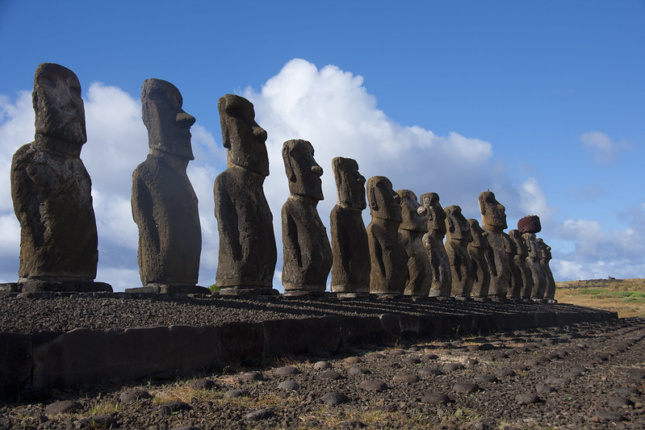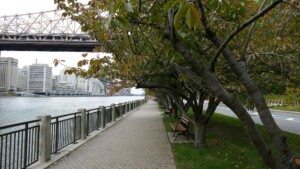Last month, Google Arts & Culture launched a new online platform drawing attention to the devastating effect that climate change has had—and will continue to have—on five diverse and vulnerable UNESCO World Heritage Sites.
The exhaustive and expertly organized initiative, Heritage on the Edge, achieves this through an array of mediums including photography, detailed 3D models, 2D maps and Street View tours, historical information, audio, interactive graphics, and present-day interviews with local conservationists and residents living in the impacted areas. Two of the endangered World Heritage Sites are also brought to life using augmented reality “pocket galleries.”
Most important, the multimedia platform, which spans over 60 pages and is illuminating as it is devastating, illustrates how people in these five unique locales have come together to protect their most cherished cultural sites against rising seas, extreme weather, coastal erosion, and drought.
Describing itself as “one of the most ambitious efforts to date to realize the power of heritage to tell the story of climate change,” Heritage on the Edge was conceived as part of a partnership between Google, California-based nonprofit 3D-surveying firm CyArk, and the Climate Change and Heritage Working Group (CCHWG) of the International Council for Museums and Sites (ICOMOS), which serves as an advisory body for UNESCO’s World Heritage Committee.
The five featured UNESCO World Heritage Sites are Rapa Nui, the remote Chilean territory also known as Easter Island, where iconic monumental stone statues are suffering damage caused by rising seas; the Scottish capital of Edinburgh, where ancient and ultra-porous landmark buildings are decaying at an increased speed due to more frequent and severe rain events; the pre-Columbian desert city of Chan Chan, Peru, that’s threatened by both flood and drought; the mosque city of Bagerhat, Bangladesh, where salty floodwaters are wreaking havoc on its ancient buildings, and Kilwa Kisiwana, a Tanzanian port city at risk of being destroyed by coastal erosion.
“The heritage narrative opens so many angles on climate change—justice, livelihoods, migration, mitigation, identity, loss, impacts, solutions and of course urgency,” Dr. Will Megarry, an archeologist and lecturer in Geographical Information Science at Queen’s University Belfast who coordinated ICOMOS’s participation, said in a statement. “The Heritage on the Edge project touches on all these and more, experimenting with multiple media, from high technology to traditional oral storytelling to make its points.”

“While climate change is predominately fuelled by large industrialised countries, it is vulnerable communities and heritage which are most impacted. This is one of the reasons why sites were chosen from across the world,” Megarry added, noting that the project “helps blaze a trail for climate communication.”
In total, five ICOMOS CCWG members coordinated the ambitious undertaking. Each oversaw efforts with local stakeholders and conservation experts to bring the platform fully to life through networking, providing climate- and heritage-related expertise and conservation support to site managers, and helping carry out “local training programs to assess site vulnerabilities.”
Megarry headed up the Kilwa Kisiwana project; Jane Downes, director of the Archaeology Institute at Scotland’s University of Highlands and Islands coordinated efforts on Rapa Nui; Andrew Potts, the U.S.-based coordinator for ICOMOS and CCHWG, organized in Bagerhat; Milagros Flores, former President of the ICOMOS International Scientific Committee on Fortifications and Military Heritage, oversaw work in Chan Chan; and Peter Cox, managing director of Carrig Conservation International Limited and president of the ICOMOS International Scientific Committee on Energy and Sustainability, served as lead in Edinburgh.
The historic Mosque City of Bagerhat, Bangladesh is at risk. But local communities are finding solutions. We are honored to assist them along with @googlearts and @CyArk by using technology to make plans to adapt to climate change. 💻https://t.co/nhFrvk1uHE#HeritageontheEdge pic.twitter.com/r3bSpJPTgE
— ICOMOS (@ICOMOS) February 2, 2020
“Above all, the project is a call to action,” wrote Dr. Toshiyuki Kono, president of ICOMOS and professor of private international law and heritage law at Kyushu University in Japan, in an introductory essay published by Google Arts & Culture. “The effects of climate change on our cultural heritage mirror wider impacts on our planet, and require a robust and meaningful response. While actions at individual sites can prevent loss locally, the only sustainable solution is systemic change and the global reduction of greenhouse gas emissions.”
Launched in 2011 as the Google Art Project through the Google Cultural Institute Initiative, Google Arts & Culture has partnered with over 1,000 museums, cultural organizations, and heritage groups—the Metropolitan Museum of Art in New York City, the Uffizi Gallery in Florence, and Amsterdam’s Rijksmuseum among them—to make a countless number of artworks and artifacts digitally accessible to the public using various existing and newly created technologies.











